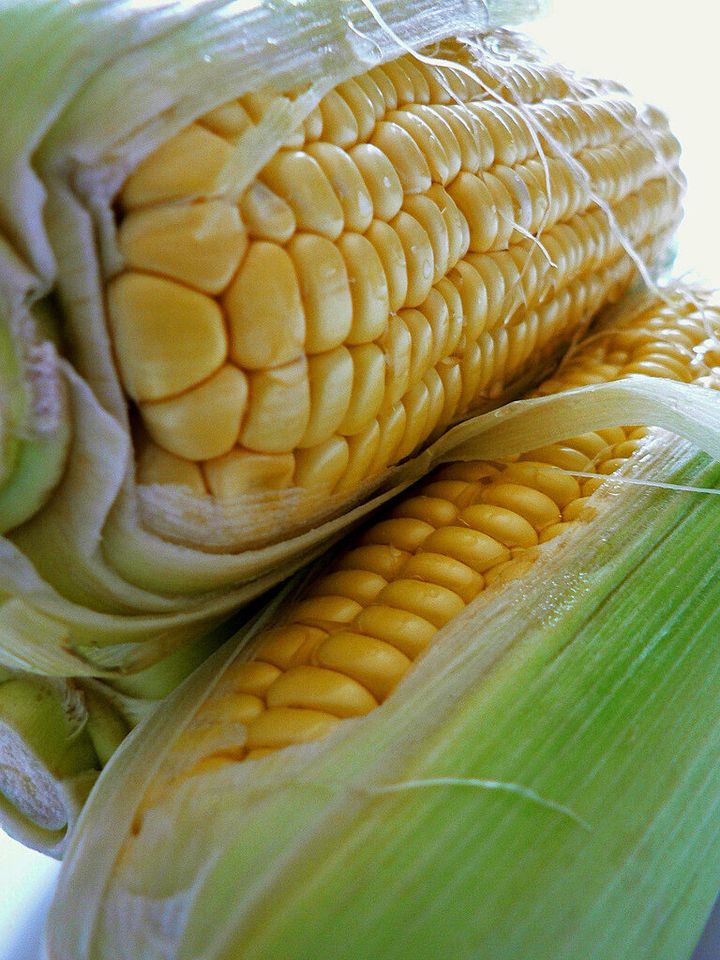
Corn has been abused, over-used and maligned in so many ways throughout the years, as manufacturers have tried and succeeded in finding various ways to use this long-time inexpensive commodity in their products.
It's more than likely that most every meal eaten throughout the day will contain a form of corn. And because most of that corn is processed -- from mildly processed to extremely processed -- we would be better off if we weren't so frequently exposed to it.
We could be having corn cereal for breakfast; tortillas or deli-meat containing corn syrup on bread containing high fructose corn syrup (HFCS) for lunch; popcorn or corn chips for a snack with a soda containing HFCS; corn on the cob for dinner with either corn-fed chicken, turkey or beef; a dessert made with cornstarch; and to top it off, a nightcap of whiskey made from corn. It's difficult to avoid. Here is a list of everyday products made with corn we could be consuming daily:
- Cereal
- Cornmeal
- Corn Oil
- Cornstarch
- Animal Feed (passes on to the consumer)
- Corn Chips
- Popcorn
- High Fructose Corn Syrup
- Tortillas/Masa
- Whiskey/Gin/Vodka
- Luncheon meats contain corn syrup or other corn derivatives.
- Breads, salad dressings, cereals, yogurts, condiments often contain HFCS.
- Even some pharmaceutical or over-the-counter pills contain cornstarch.
- The additive dextrose can often be from corn sugar.
Natives to the Americas have eaten corn for the last 7,000 years, and the rest of the world has enjoyed it for just the last 500 years, thanks to its discovery by Christopher Columbus. It's now considered a dietary staple, and is the largest selling crop in the U.S. The U.S. is the largest producer of corn in the world, and it is a major export commodity to countries such as Japan, which imports more than any other country.
Corn, however, has a high omega 6 oil content, and this is what is troubling in our diet. With its extreme use, the corn additives and junk foods have disrupted the omega 3/omega 6 balance of oils in our diet, causing an increase of inflammation, in turn creating more sickness.
And even more troubling is the highly processed corn. A study at UCLA's Jonsson Comprehensive Cancer Center found that pancreatic cancer cells are fueled by ingestion of refined fructose products, which includes high fructose corn syrup (HFCS); it is actually a refined food that has been again refined. The study shows that cancer cells grow and multiply on a diet filled with high fructose corn syrup. The American consumption of high fructose corn syrup went up 1,000 percent between 1970 and 1990, correlating with when the substitution of refined cane sugar with HFCS in soft drinks took place, mainly because it is cheaper to use.
On the other hand, the freshest natural corn from the cob has been found to be very nutritious. Whole kernel corn has high fiber, and has a great amount of folate (or folic acid), which is known to deter birth defects during pregnancy, and lower blood pressure and the risk of heart disease by lowering homocysteine in the arteries.
Researchers at Cornell University found that cooking corn actually releases significant amounts of its antioxidant properties. They also found that cooked corn beneficially unleashes an ingredient known as ferulic acid.
Ferulic acid is found in fruits and vegetables, but for some reason it is at very high levels in corn. The University researchers indicate that this potent nutrient is actually a very tough cancer fighter, and eating foods rich in ferulic acid can help prevent the beginnings of cancer since it is a very effective scavanger of the free radicals that contribute to causing cancer.
Another study done at Ohio State University found that purple corn was rich with a potent antioxidant called anthocyanin that inhibits the growth of cancer cells as well.
Corn has been put down as having too much starch, but, in fact, it contains what is called resistant starch that "resists" digestion in the small intestine. The high fiber content goes hand in hand with this, making corn one of the top eight foods best to clean the colon. Even popcorn has its great quality of being a high fiber food. As long as it's eaten without tons of salt and artificial butter, you're good to go.
We've been advised to avoid corn because of its high sugar content, but its beneficial qualities outweigh this aspect, especially since the high fiber works in controlling the release of its sugar.
It's also interesting to note that the high-temperature alkaline process used for making masa -- the corn meal in tortillas, tamales, etc. -- actually increases the availability of nutrients such as calcium and niacin. And the nutritious germ of the kernel in masa is not removed as in corn flour.
Learning that it is lurking everywhere in many forms, we can be mindful to try and cut down on foods that contain the more processed corn, and then balance our diet with more of the omega 3 foods such as walnuts, beans, virgin olive oil, wild fish, butternut squash, and flaxseed.
Just as it is with most foods, it is the processing that get us into trouble. As you can see, Mother Nature offers us naturally nutritious corn to make us healthy.